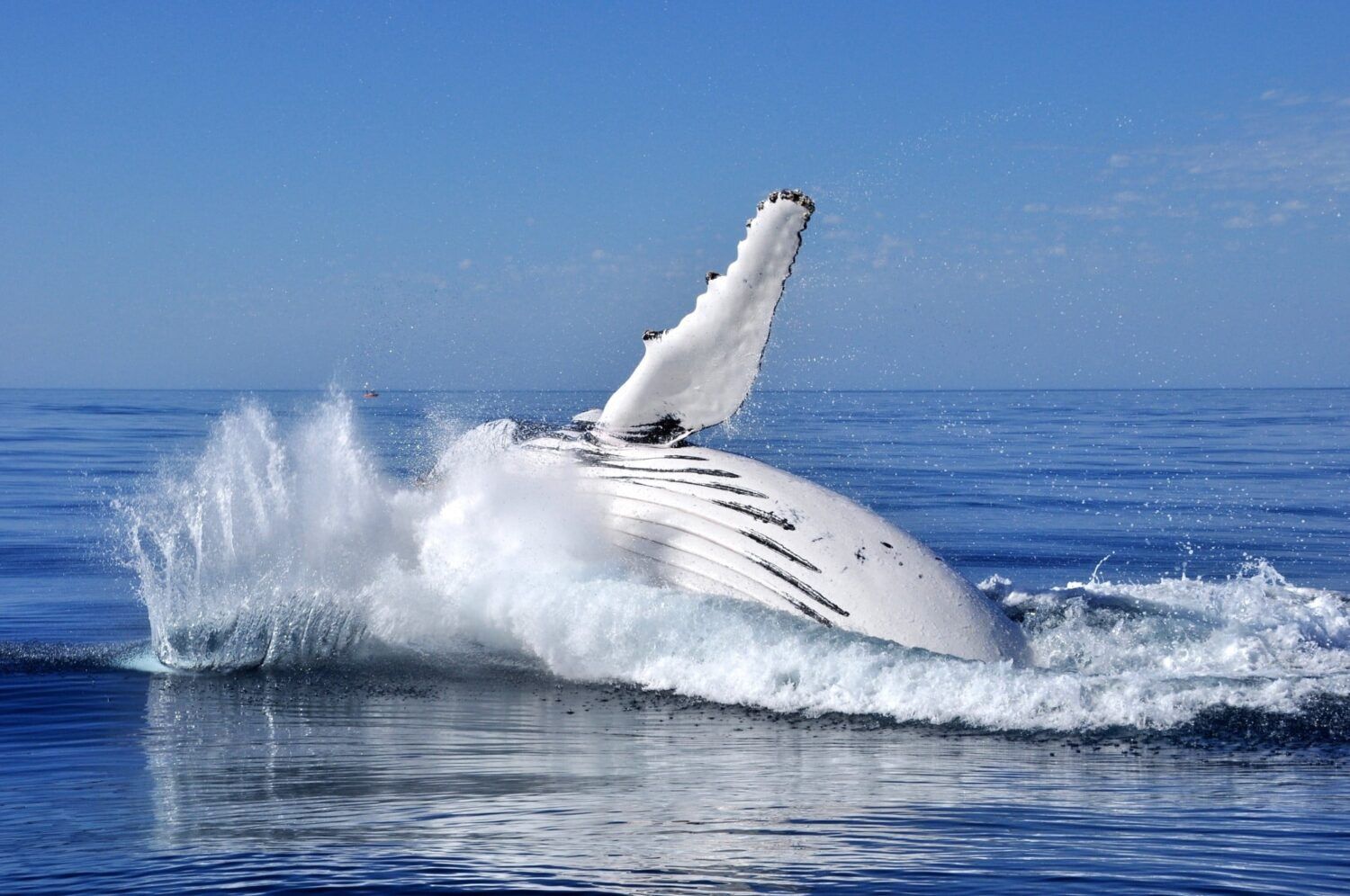What is the best way to see whales in San Diego?
Nothing matches the experience of seeing huge whales up close in a boat. Many whale watching tours will take guests in large boats with loud engines, but noise pollution is a serious threat to these marine mammals, which rely on their fine sense of hearing for survival.
We think the best way to see whales is in a kayak. With zero emissions and no engine noise, kayaks give you an opportunity to see whales closer and with fewer risks to the animals. Eco-friendly whale watching is better for the animals, better for the ocean, and ultimately better for us.
We are in the throes of the perfect time to go whale watching San Diego! Every winter, more than 20,000 Pacific gray whales travel 10,000 miles round-trip (the longest migration of any mammal on earth) from Alaska to the lagoons of Baja California. That makes San Diego, with its 78 miles of coastline directly in the migration path, the perfect place to watch.
The best time to watch for gray whales is from December through mid- to late April, depending on the year. To see a blue whale, wait until the spring and summer seasons. That’s when several hundred Blue whales migrate into southern California waters to feed on huge quantities of krill. Dolphins, Finback whales, Humpback whale, Minke whales, and other whales may also be viewed then.
There are plenty of boat tours that will take you out on the water for a close-up glimpse, but if you’re looking to stay dry and just take it easy, here are some great ways to go whale watching in San Diego and in and around La Jolla.
Western Overlooks at Cabrillo National Monument
The gray whales have been known to pass right by the western overlooks of Cabrillo National Monument — the heights and incredible panoramas from the park’s Whale Overlook and Old Point Loma Lighthouse offer the best viewing of the San Diego coastline. Bring binoculars if you have them: they can make things much easier! If you don’t have any, a limited number of binoculars are available at the Visitor Center during whale season. Just ask for them at the information desk.
Luckily, it’s possible to see the whales anytime during daylight hours — they swim 24 hours a day.
Where to Look
Look west from the park overlooks, toward the ocean and San Diego Bay. The whales are migrating south towards mainland Mexico, so they will be moving from the north (right) to the south (left) as you look from the park. Expect them to be moving at a steady clip of about five miles per hour, and although some whales swim close to shore, most swim in an area that extends from the kelp beds (about three-quarters of a mile out) to the horizon.
Later in the spring, the gray whales will migrate north again, but they are generally too far out in the ocean to see from the park.


